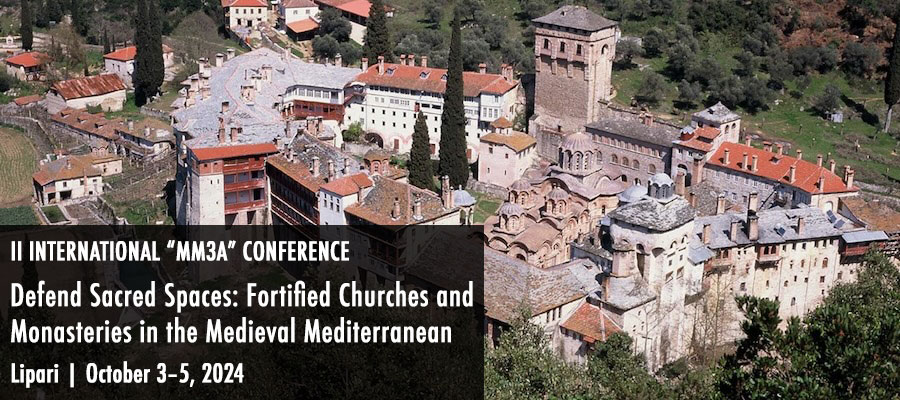Defend Sacred Spaces: Fortified Churches and Monasteries in the Medieval Mediterranean (9th-14th Centuries), II International “Mm3a” Conference, Lipari, October 3–5, 2024
Papers are invited for the II International “Mm3a” Conference.
Starting from the end of the 9th century, important events including the disintegration of the Carolingian empire and the advance of populations from northern and eastern Europe and the Arab world triggered a phase of insecurity and political instability. The Mediterranean, a place of meetings and exchanges between culturally and geographically distant populations, was particularly affected by these events. In a climate full of tension, threatened by internal conflicts and the advance of non-Christian populations, it became essential to defend the “home of God”. This concept translated architecturally into the adoption of design solutions inherited from military architecture. Throughout the eastern and western Mediterranean, numerous monasteries, abbeys, and churches acquired the appearance of fortresses, marked by high defensive towers and wall-walks, often integrated with the walls and defensive structures of the cities. Architectural innovations, useful for the defense of a single monument or entire villages and cities, spread quickly across the Mediterranean and its areas of influence, acquiring territorial specificities.
Considering the historical context between the 9th and 14th centuries, the II International “Mm3a” Conference in Lipari proposes the development of a framework on fortified religious architecture through: the analysis of the relationships between the regional architectural solutions and the socio-economic contexts, the studies of exchange methodologies and models dissemination and their adjustments according to local building traditions.
To this end, the study topics on fortified religious complexes are:
- the formation of the architectural phenomenon in relation to the respective regional, cultural, and religious contexts;
- the main players: commissioner, creators, users;
- the diffusion of architectural models and construction techniques;
- the contributions of the ecclesiastical and knightly religious orders in the architectural field;
- restoration as a tool for knowledge;
- historical sources, ecclesiological doctrines, and monastic culture.
- art, iconography, and forms of representation
The Conference will include papers and a poster session.
The languages of the Conference are Italian, English, French and Spanish.
